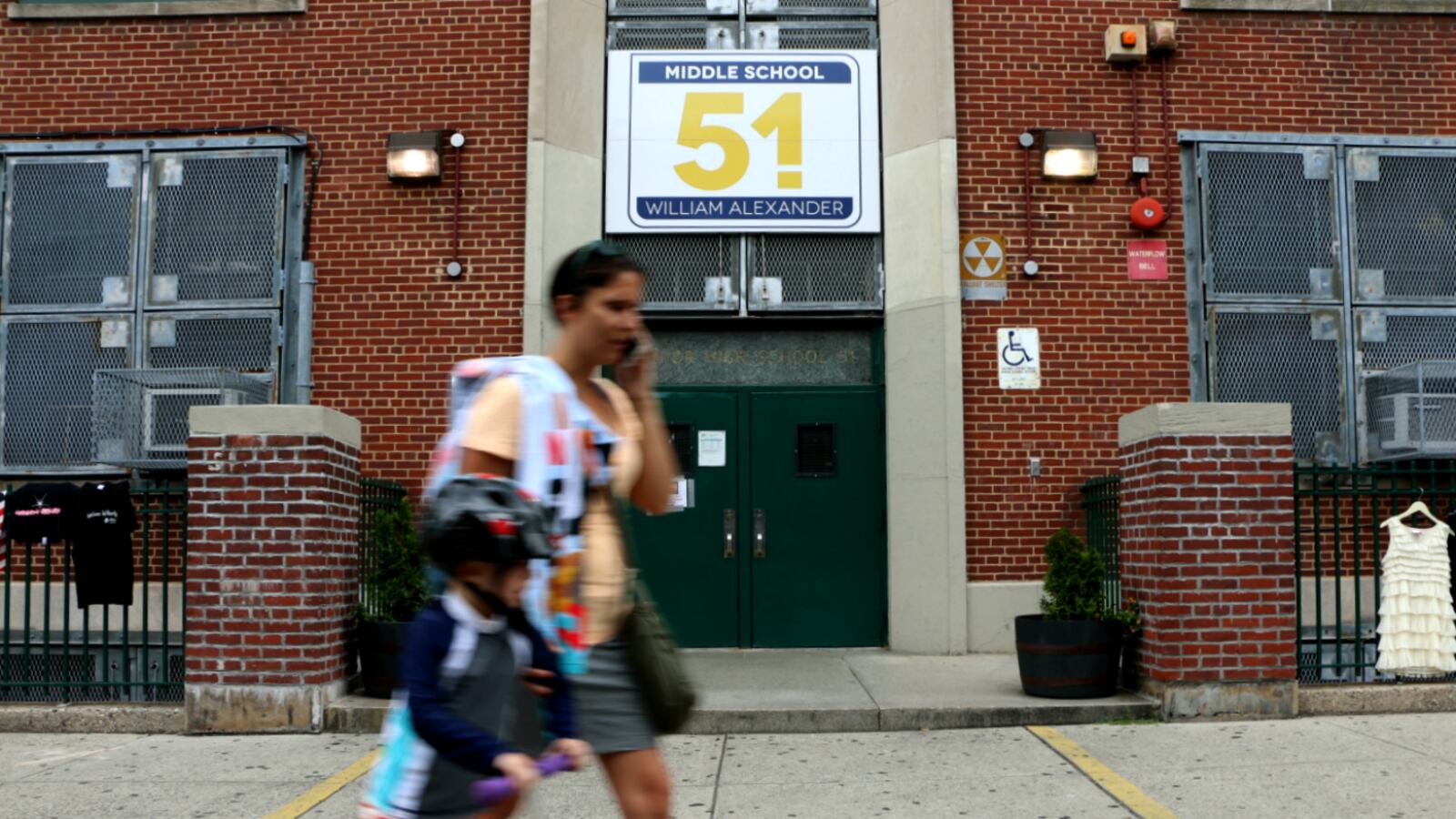After sustained pressure from advocates and elected officials, the New York City education department is taking steps towards a plan to promote diversity in middle schools across an entire district — which would make it one of the most far-reaching integration efforts under Mayor Bill de Blasio to date.
In the coming months, the department will launch a community-input process to gather ideas about how to create such a system in Brooklyn’s District 15, where the middle schools are sharply segregated by race and class.
But in a show of how difficult the work could be, at least one well-connected community organizer has already declined to join the city’s efforts, saying communities of color haven’t been included in a meaningful way before now.
“It’s a cold-call,” said Javier Salamanca, who has led efforts to fight overcrowding in the district, but turned down the offer to join the unfolding diversity work. “There’s no relationship.”
District 15 has unique potential to integrate its middle schools. While segregation is often blamed on residential patterns, the district uses a choice-based enrollment system that lets families apply to any middle school in the district — even ones far beyond the neighborhoods where they live. The district also enrolls a diverse mix of students from the affluent neighborhoods of Park Slope and Carroll Gardens, as well as the heavily immigrant communities of Red Hook and Sunset Park.
However, 81 percent of white students are concentrated in just three of the district’s middle schools, according to an analysis by parents pushing for changes to the admissions system.
“It’s clear that some of our middle schools do not reflect the diversity of our district,” said District 15 Superintendent Anita Skop. “We want to make sure there is equity of access for all children.”
The city awarded a $120,000 contract earlier this year to WXY Studio, an urban planning and design firm, to create a public-input process in District 15, where parents have lobbied for years for changes to the middle school admissions process. Experts said the process could become a blueprint for other districts interested in pursuing their own integration plans.
The firm — which, among other high-profile projects, helped the city create a development plan for East Harlem — has already started to assemble a working group of parents, educators and local advocates. The group of about 15 members will host a series of public meetings to gather feedback and develop a proposal to change student enrollment in the district.
The city hopes to have a plan by the end of the current school year. Earlier this year, the department announced a district-wide diversity plan for elementary schools on the Lower East Side.
Councilman Brad Lander, who represents part of District 15 and has been an outspoken advocate for school integration, called the process a “big opportunity.”
“That the department of education has wanted to commit to this is encouraging,” he said. “Taking district-wide steps to combat school segregation and achieve more integrated schools is a fundamentally important next step.”
Advocates are paying close attention to the makeup of the working group, which has already been the source of friction.
Salamanca, the co-founder of Make Space for Quality Schools in Sunset Park, who declined to join the working group, said that integration is not a top concern for parents in his community — which includes many Mexican and Chinese immigrants. They are more worried about severe school overcrowding, which leads to packed classrooms and limited space for things like science labs, he said.
The working-group invitation felt more like an effort to create the appearance of diversity than a real attempt to listen to the parents in his community, Salamanca added.
“As one of the few grassroots groups organizing parent voices in Sunset Park,” he wrote in a statement posted on Facebook, “we choose not to be tokenized for the purposes of this initiative.”
His reservations reflect a deeper criticism of the city’s budding integration movement: that it’s dominated by white middle-class parents and needs to draw on a wider range of perspectives.
“This issue can have the effect of alienating communities of color,” said Matt Gonzales, who promotes integration policies through the nonprofit New York Appleseed. The tension over the District 15 working group “is one of the clearest indications of that.”
Skop, the district superintendent, said the education department is open to feedback about how the input process should proceed. And she emphasized that the city wants to involve parents from across the district.
“I think as people see we really want to hear their voices, people will be much more eager to work with us,” she said. “We very much want to hear from all areas of the district.”

